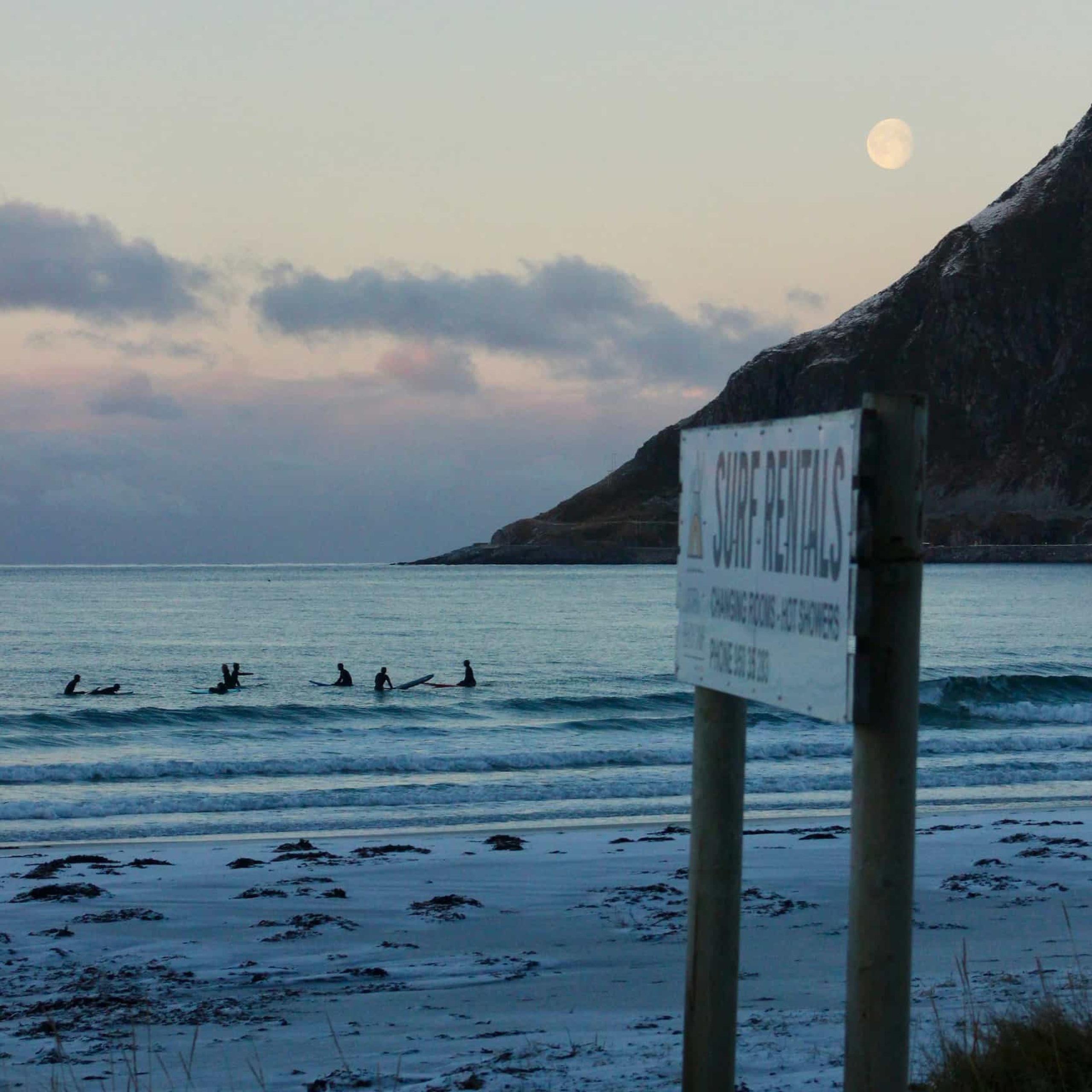Explore the wild beauty, rich culture, and unforgettable adventures of Norway’s iconic Arctic archipelago in this complete guide to experiencing Lofoten.
Literally the last stop on the E10, Å is a tiny fishing village that feels like stepping back in time. Explore the Norwegian Fishing Village Museum, wander among red rorbuer cabins, and enjoy cinnamon buns from the local bakery.
This charming harbor town is famous for its football pitch perched on a rocky islet. Stroll through galleries, sip coffee in cozy cafés, and watch fishing boats come and go.
One of Norway’s oldest and best-preserved fishing villages, Nusfjord offers colorful cabins, a working harbor, and a glimpse into Lofoten’s past. It’s small, but the atmosphere is unforgettable.
Often called Norway’s most romantic beach, Uttakleiv has smooth rocks, soft sand, and dramatic mountain backdrops. It’s especially magical under the midnight sun or the northern lights.
Even if you don’t hike Reinebringen, you should spend time wandering Reine’s narrow streets, taking in its stunning setting of peaks rising straight from the fjord. Morning light here is pure magic.

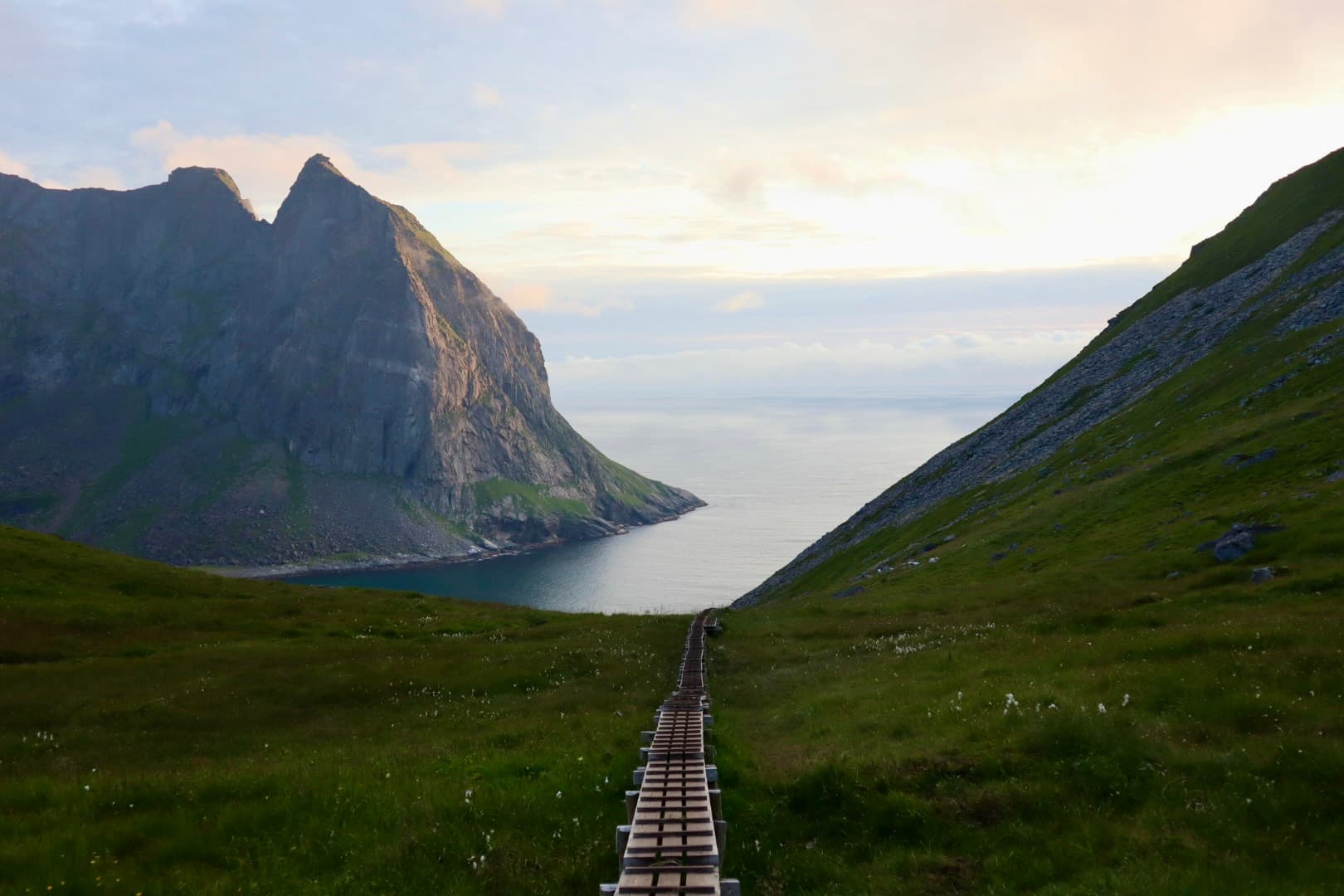
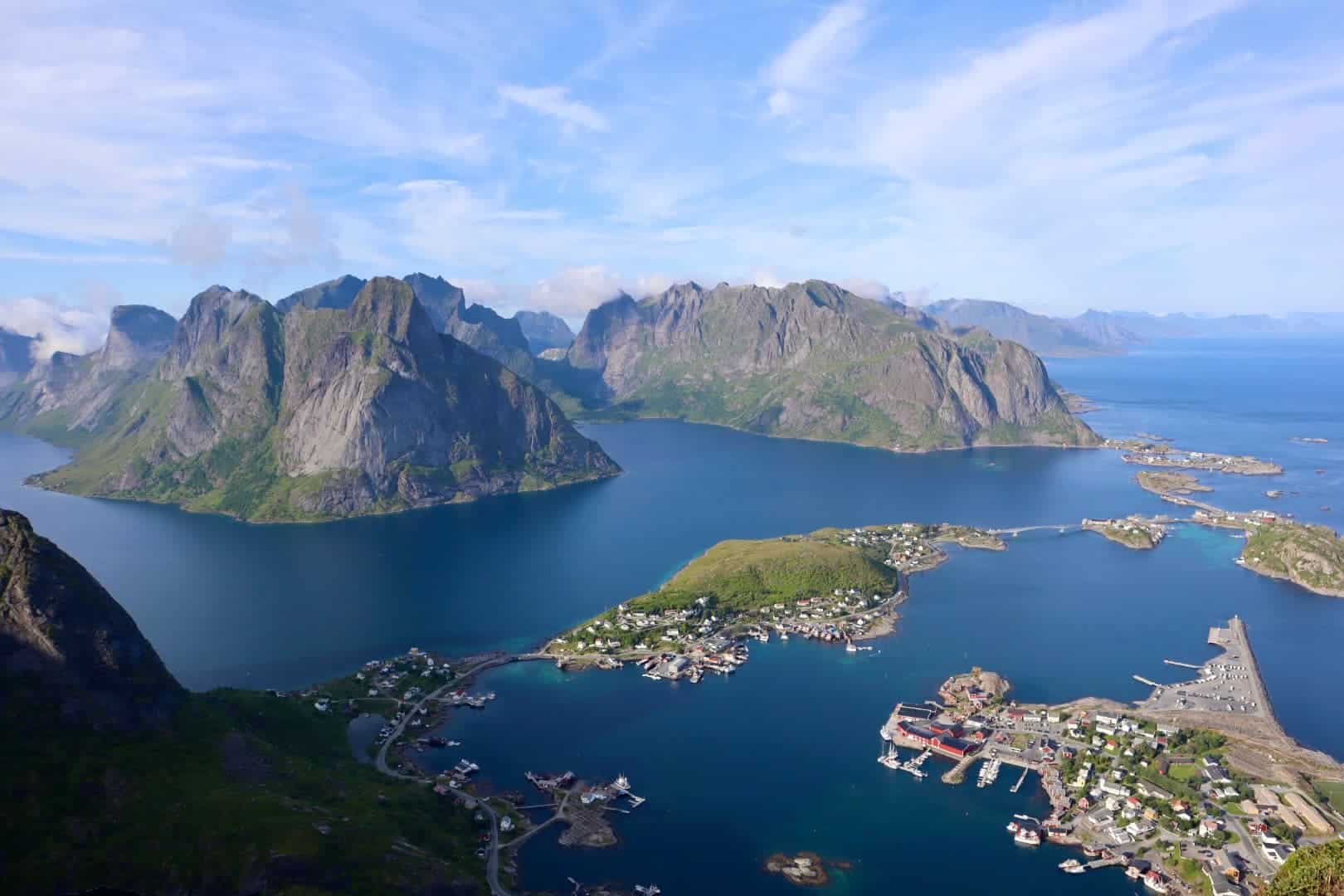
Short but steep, this hike rewards you with the postcard view of Reine, surrounded by rugged mountains and shimmering fjords. Thanks to newly built stone steps, the trail is now safer and less muddy, though your calves might still complain. You can find the Reinebringen All Trails map here.
A relatively quick climb with stunning pay-off, Festvågtind offers a bird’s-eye view over Svolvær and the Vestfjord. It’s a great choice if you’re short on time but still want those “how is this even real?” moments. You can find the Festvågtind All Trails map here.
This hike is moderate in effort but huge in rewards. The summit gives you a 360° panorama of turquoise waters, white-sand beaches, and the endless horizon—especially magical during the golden hours of midnight sun. You can find Offersøykammen All Trails map here.
A Lofoten classic. This trail takes you above one of Norway’s most beautiful beaches, with the dramatic drop to Kvalvika making for jaw-dropping photos. The hike is moderate, with plenty of spots to catch your breath and take in the view. You can find the Ryten All Trails map here.
Perched between two of Lofoten’s most famous beaches, Mannen delivers incredible scenery in every direction. It’s relatively short but steep, perfect for an afternoon adventure before a beach picnic. You can find the Mannen All Trails Map here.
The Lofoten Islands in Northern Norway might be famous for dramatic mountains and fishing villages, but their beaches are just as spectacular. Imagine turquoise waters, golden or white sands, and rugged peaks rising straight from the sea. Whether you’re looking to surf, hike, relax, or camp under the midnight sun, these beaches have something for everyone.
Here’s your guide to six of Lofoten’s most beautiful beaches — including where you can camp.
Our personal favourite, tucked between steep mountains and accessible only on foot, Kvalvika Beach feels like a hidden treasure. The hike from either Fredvang or Torsfjord takes about 1–2 hours, rewarding you with sweeping views of the wild bay.
Best for: Hikers, wild campers, photographers.
Camping: Yes. You can wild camp right on the sand or on grassy patches behind the beach. Just follow Leave No Trace principles and expect no facilities — bring all supplies.
Pro tip: Hit two birds with one stone and Hike Ryten peak above Kvalvika for one of Lofoten’s most iconic views.
Uttakleiv Beach is famous for its dramatic mountain backdrop, smooth round boulders, and sweeping ocean views. It’s one of the most photographed beaches in Lofoten, but it’s not just tourists who love it — a large local sheep population roams freely here, often joining visitors for sunset walks.
Best for: Scenic views, coastal hiking, meeting Lofoten’s friendliest sheep.
Camping: Yes. There’s a dedicated campsite right next to the beach with basic facilities (toilets, fresh water). Wild camping is also possible in certain spots outside the fee area.
Pro tip: Walk the coastal path to Haukland Beach for a scenic half-day hike — just watch where you step, the sheep aren’t shy about leaving little “souvenirs.”
Haukland Beach is often called the most beautiful in Norway, with soft white sand and Caribbean-like colors (minus the tropical warmth!). In summer, the sheltered bay is perfect for swimming — if you don’t mind chilly water.
Best for: Families, swimming, picnics.
Camping: Yes. There’s a designated area where overnight parking and camping are allowed for a fee. No wild camping directly on the main beach itself.
Pro tip: Haukland faces west, so it’s perfect for golden-hour photography.
Located near Flakstad, Skagsanden Beach is famous among Arctic surfers and photographers. Its wide, flat sand is perfect for long walks, and in winter, you might catch the Northern Lights reflecting in tidal pools.
Best for: Surfing, winter photography, long walks.
Camping: Yes. There’s a small parking/camping area with toilets right across the road from the beach. Wild camping on the sand itself is discouraged due to tides and wildlife.
Pro tip: Stay at Lofoten Beach Camp right by the shore — you’ll have unbeatable beach access, a front-row seat to the waves, and maybe even a midnight sun or aurora show from your tent.
Unstad is world-famous for Arctic surfing, attracting wave riders from all over. The beach is a mix of sand and smooth boulders, surrounded by steep mountains. Even if you’re not surfing, it’s worth visiting just to watch the action.
Best for: Surfing, adrenaline seekers, unique experiences.
Camping: Yes. Unstad Arctic Surf offers camping spots with facilities. Wild camping is possible nearby but stick to established areas to avoid damaging the fragile tundra.
Pro tip: Try the local cinnamon buns at the surf café — legendary among travelers.
Right off the main E10 road, Ramberg Beach is a postcard-perfect stretch of golden sand. It’s easily accessible and close to the village, making it a convenient stop on your Lofoten road trip.
Best for: Easy access, quick photo stops, short beach strolls.
Camping: Yes. Ramberg has a camping site with full facilities just steps from the sand. Wild camping right on the beach is not encouraged, but nearby grassy areas are available.
Pro tip: Fantastic place to watch the midnight sun in summer.
Norway’s “Right to Roam” law allows wild camping for up to two nights in most uncultivated areas, provided you’re at least 150 meters from the nearest building. However, Lofoten’s growing popularity means some beaches now have camping restrictions or designated areas. Always check local signs and respect nature by leaving no trace.
Lofoten is beautiful year-round, but the experience changes dramatically with the seasons.
Summer (June–August) – Midnight sun, mild temperatures, and the best conditions for hiking, kayaking, and camping. Beaches look tropical, but the water still hovers around 10–15°C. This is also high season, so expect more visitors and book campsites early.
Autumn (September–October) – Fewer crowds, golden landscapes, and the start of Northern Lights season. Weather is more unpredictable, and many tourist services start to close.
Winter (November–March) – Snow-covered peaks, dramatic light, and prime Northern Lights viewing. Ideal for those who want a raw Arctic experience. Some roads and trails may be inaccessible.
Spring (April–May) – Long days return, snow lingers on the mountains, and flowers begin to bloom. Great for photography without peak-season crowds.
How long to stay:
For a relaxed trip that covers beaches, hikes, and a few fishing villages, 5–7 days is ideal. If you want to explore deeply, include remote hikes, or combine Lofoten with other parts of Northern Norway, aim for 10–14 days.
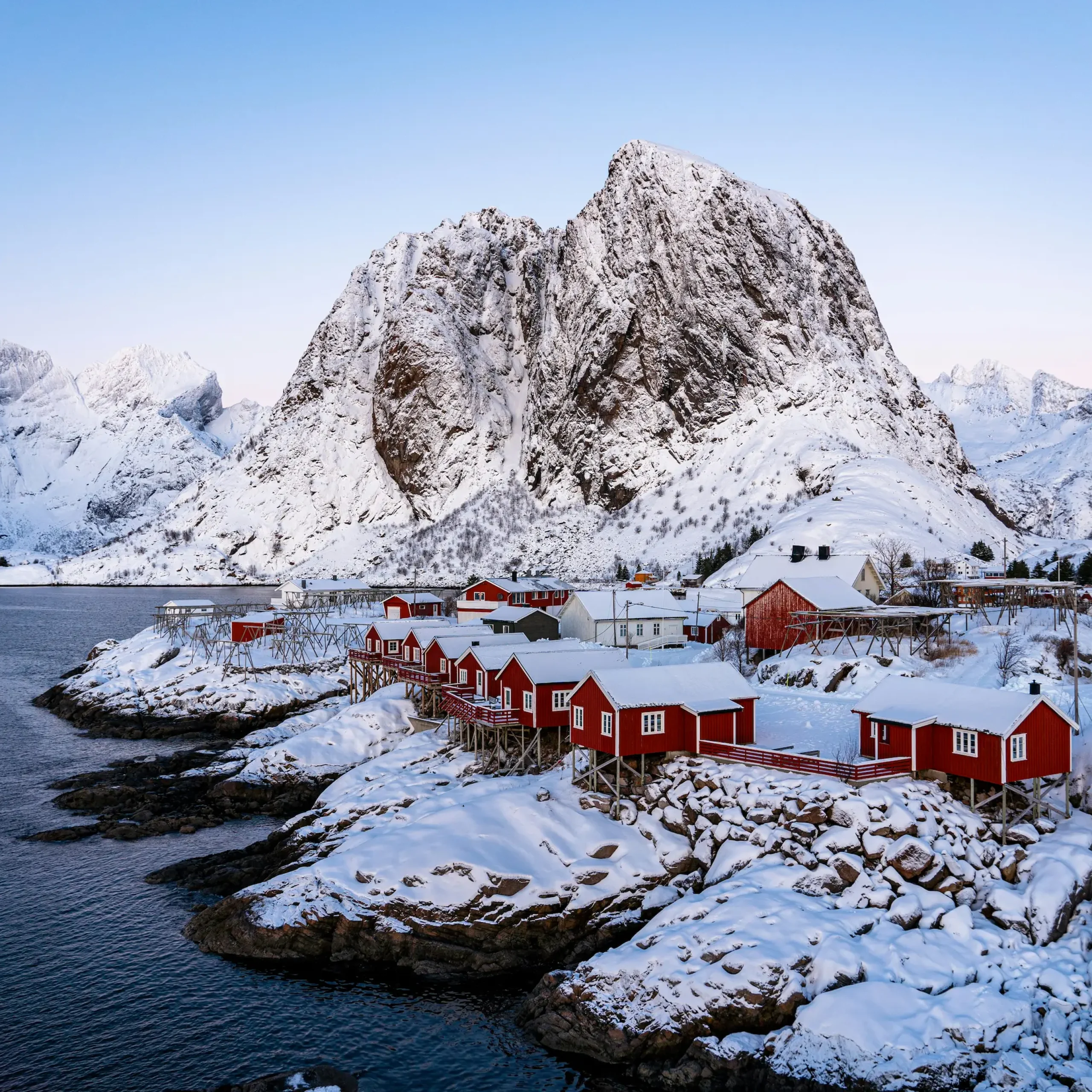
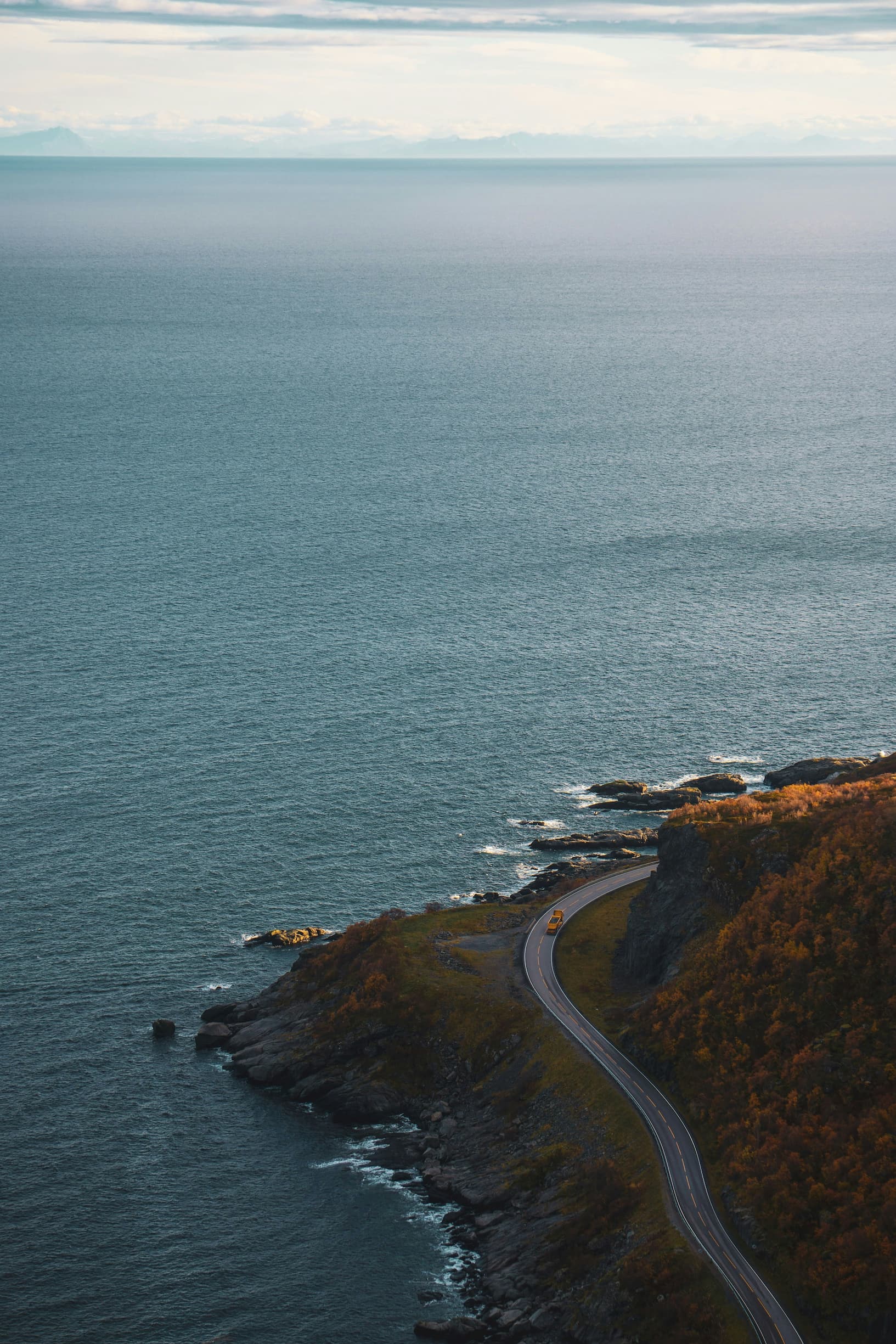
Reaching Lofoten takes some planning, but the journey is part of the adventure. You have several options:
1. By Air
Leknes (LKN) and Svolvær (SVJ) are Lofoten’s main airports, with connections from Bodø and Tromsø.
Flights are usually on smaller regional planes, so book in advance in high season.
2. By Ferry
From Bodø, take a ferry to Moskenes (near Reine) or to Svolvær. The Moskenes route is most popular for those starting their Lofoten road trip in the south.
You can also take the ferry from Skutvik or Bognes to Svolvær or Lødingen.
3. By Car
Drive the scenic E10 highway from mainland Norway via the Lofast bridge connection. Many visitors combine this with a ferry crossing to shorten the route.
Travel Tip: If you plan to camp or bring outdoor gear, having a car (or campervan) is highly recommended — public transport exists but is limited, especially for reaching remote beaches.
Go surfing at Unstad Beach
Rent the sauna at Lofoten Apartments
Go kayaking in Henningsvær
Have a cinnamon bun in Nusfjord
go on a fishing boat in Reine
